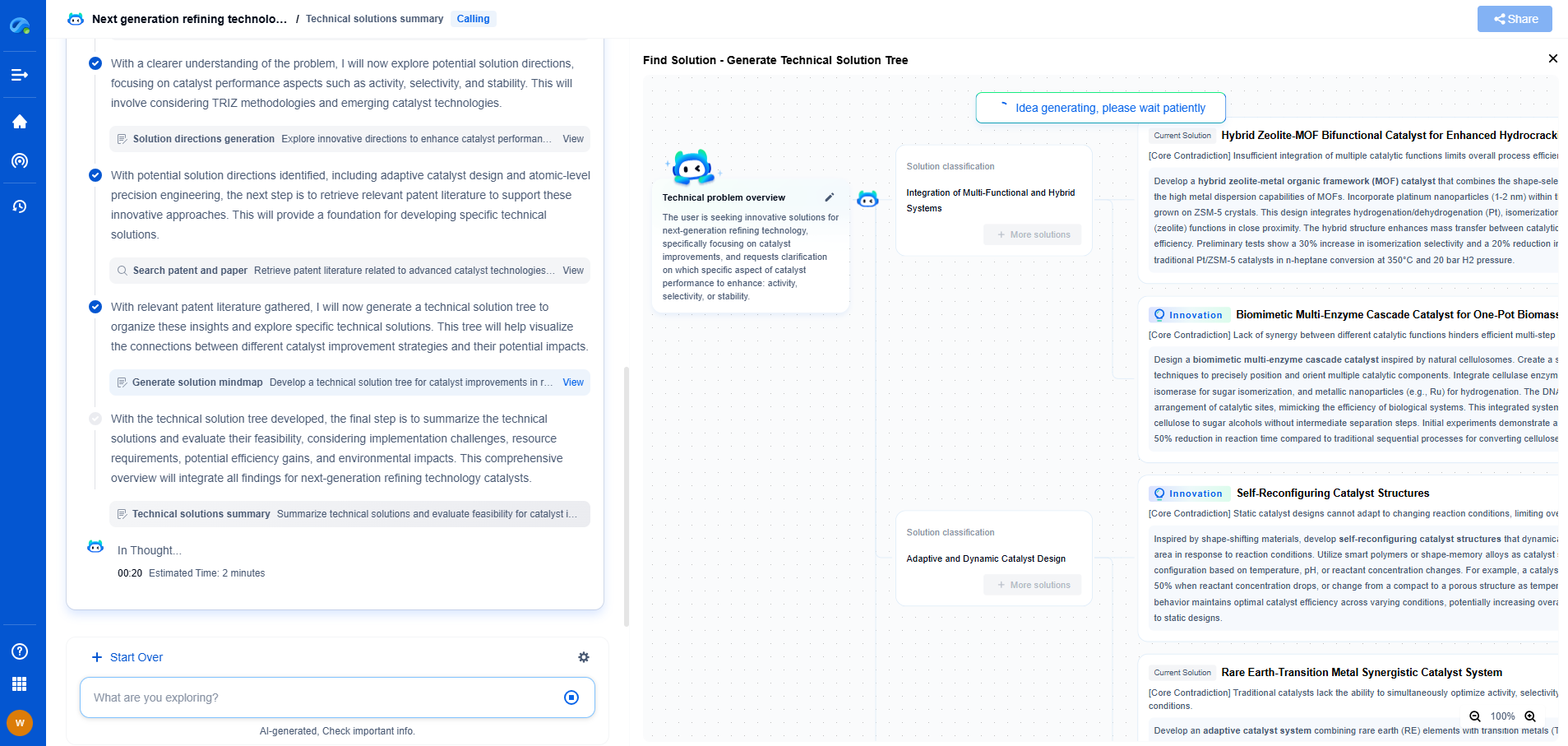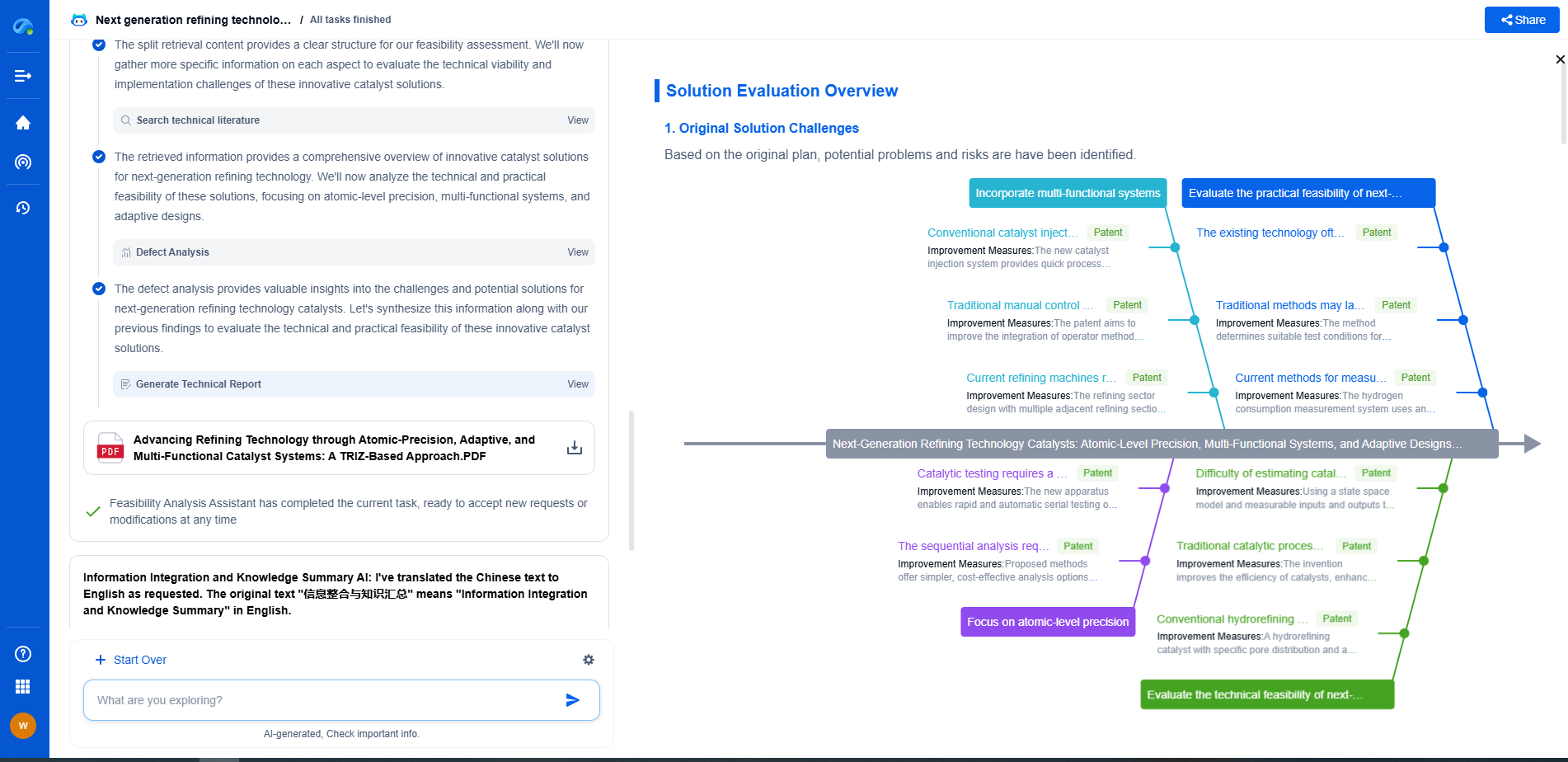Why Do Wind Turbines Shut Down at High Wind Speeds?
JUN 26, 2025 |
Wind turbines have become a pivotal component in the quest for renewable energy, turning the kinetic energy of the wind into electricity. As simple as they might seem, the operation of wind turbines involves complex engineering principles to ensure they function optimally and safely under varying weather conditions.
The Wind Speed Conundrum
The efficiency of a wind turbine is closely tied to the wind speed. At lower wind speeds, turbines may struggle to generate significant power, while moderate wind speeds are where they operate most efficiently. However, as wind speeds continue to increase, they reach a threshold where the operation of the turbine must be curtailed or halted altogether. This might seem counterintuitive at first – after all, more wind should theoretically produce more energy. So, why do wind turbines shut down at high wind speeds?
Safety First: Protecting the Turbine
The primary reason for shutting down wind turbines at high wind speeds is safety. Turbines are engineered to withstand a certain range of wind speeds, known as the operational wind speed range. When wind speeds exceed this range, usually around 25 meters per second (about 56 mph), the stress on the turbine components increases significantly. This includes the blades, gearbox, and generator, which can all suffer damage if subjected to excessive forces. The shutdown process, known as "furling," involves pitching the blades to a position that reduces wind resistance, thus minimizing stress on the structure.
Preserving Equipment Longevity
Shutting down turbines in high winds is not only about immediate safety but also long-term maintenance. Consistent exposure to extreme wind conditions can accelerate wear and tear, leading to more frequent repairs and replacements. By halting operations during these periods, operators can ensure the longevity of the wind turbine and reduce the overall cost of maintenance.
Protecting the Power Grid
Another critical reason for halting operations during high wind speeds is to protect the stability of the power grid. Wind turbines are designed to deliver a steady flow of electricity. However, during high winds, the rapid changes in wind speed can cause fluctuations in power output. These fluctuations can create imbalances in the electricity grid, potentially leading to power surges or even outages. Temporarily shutting down some turbines can help maintain grid stability during these periods.
The Role of Modern Technology
Modern wind turbines are equipped with sophisticated monitoring and control systems that automatically detect wind speed and other environmental conditions. These systems can adjust the pitch of the blades and the yaw of the nacelle to optimize performance in varying wind conditions. When high wind speeds are detected, the control system initiates a shutdown to prevent damage. This automated process ensures that turbines are both efficient and safe under all operating conditions.
The Environmental Impact
While shutting down turbines at high wind speeds might seem like a loss in potential energy generation, the practice is essential for the sustainable operation of wind farms. By preserving the structural integrity of turbines and ensuring grid stability, operators can provide a more consistent and reliable source of renewable energy over time. This approach ultimately supports broader environmental goals by maximizing the lifespan and efficiency of wind energy resources.
In Conclusion
Wind turbines are marvels of modern engineering, designed to harness the power of nature responsibly and efficiently. Shutting them down at high wind speeds is a necessary precaution that balances safety, equipment longevity, grid stability, and environmental sustainability. By understanding these practices, we can better appreciate the complexities involved in generating clean, renewable energy and the critical role wind turbines play in our future energy landscape.
Empower Your Wind Power Innovation with AI
In the fast-evolving landscape of wind turbine technology—where aerodynamic optimization, generator efficiency, and structural innovation are critical—staying ahead requires more than just expertise. It requires intelligent tools that accelerate R&D and protect your competitive edge.
Patsnap Eureka is your AI-powered research assistant, designed specifically for innovators like you working at the forefront of Wind Motors. Whether you're analyzing blade design trends, exploring novel gearbox architectures, or navigating complex global patent landscapes, Eureka streamlines the entire process with precision and speed.
👉 Experience how Patsnap Eureka can revolutionize your R&D and IP strategy. Request a demo today and power up your next breakthrough.
- R&D
- Intellectual Property
- Life Sciences
- Materials
- Tech Scout
- Unparalleled Data Quality
- Higher Quality Content
- 60% Fewer Hallucinations
Browse by: Latest US Patents, China's latest patents, Technical Efficacy Thesaurus, Application Domain, Technology Topic, Popular Technical Reports.
© 2025 PatSnap. All rights reserved.Legal|Privacy policy|Modern Slavery Act Transparency Statement|Sitemap|About US| Contact US: help@patsnap.com

